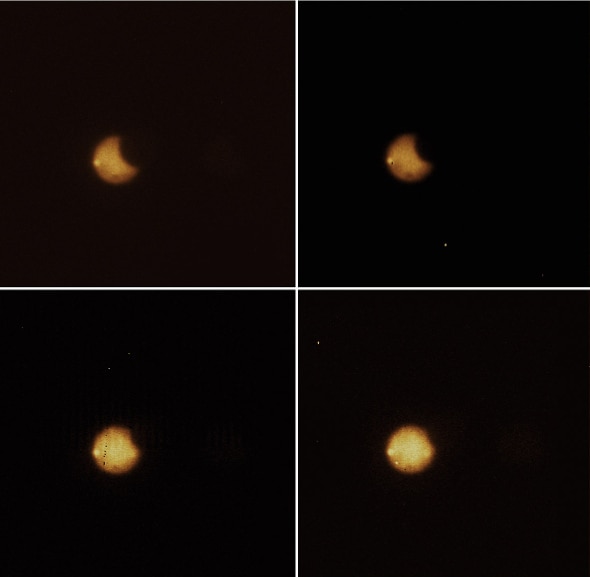Create a free profile to get unlimited access to exclusive videos, sweepstakes, and more!
An Accidental Eclipse From 700 Million Kilometers Away

Astronomers keeping an eye on Jupiter’s moon Io got a surprise on Dec. 16, when it looked like something had taken a bite out of it:
What they saw was another of Jupiter’s moons, Europa, passing directly in front of Io, what astronomers call a transit (or more generically a “mutual event”).
Jupiter’s moons orbit the giant planet directly above its equator, and a few times a year everything lines up just right so that, from Earth, we see the orbits edge-on. When that happens the moons can pass in front of each other, creating a transit (or an eclipse if the more distant moon is completely, or nearly completely, covered).
I had to laugh when I saw the animation. My first thought was, why didn’t the astronomers know this would happen? The log records (in the link above) show they really were surprised. So I looked up how often these transits happen, and it turns out to be a little complicated. First, they happen clustered in time when Earth passes through Jupiter’s equatorial plane. Then you might only see a half-dozen or so from a given location per month (some happen during the day, or behind Jupiter, when you can’t see them). That’s not very many, and even then they only last for a few minutes at a time.
So really, from a given observatory, it’s pretty unlikely at any given time to accidentally observe a transit. However, in this case, astronomers are engaging in a long-term campaign to observe Io, because the tides from Jupiter cause it to be the most volcanically active object in the solar system. Its volcanoes are constantly erupting, and when they do they’re visible in the infrared. The Gemini telescope, which made these observations, is designed to look at these wavelengths, and in fact you can see an active volcano on the upper left part of Io’s face. Since things on Io change all the time, lots of observations are made, and so it’s inevitable a visible transit would happen eventually.
Europa’s surface is water ice, which is pretty good at absorbing the particular color of infrared observed, so it looks dark. After the transit, the astronomers switched filters so that Europa can be dimly seen moving off to the upper right.
Sometimes there can be serendipitous science from such things; for example, the exact timing can be used to test equations predicting locations of volcanoes on Io and the positions of the moons themselves.
But one thing that I’m pretty sure will come of all this: In the future, I bet the astronomers making these observations will check for mutual events before the observations start!


























